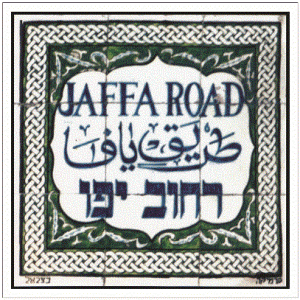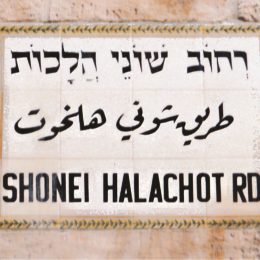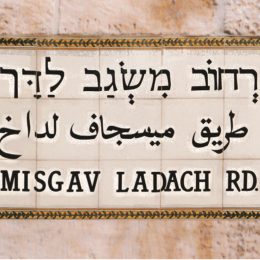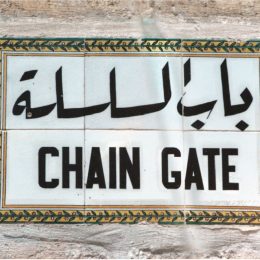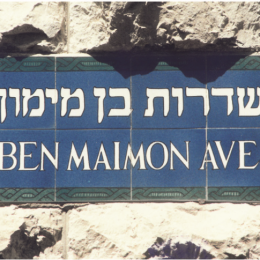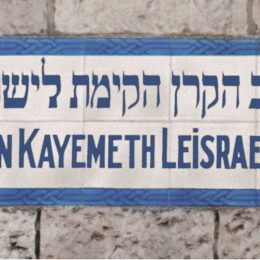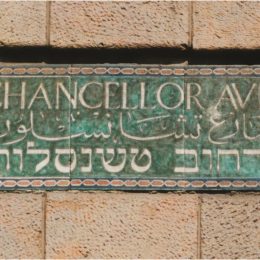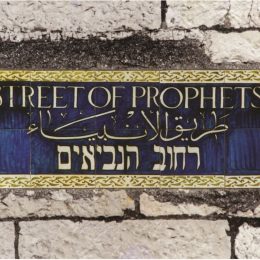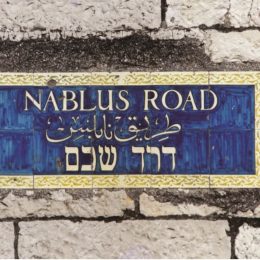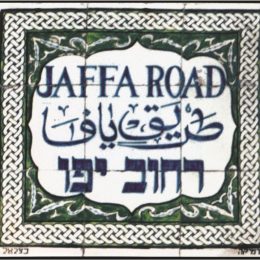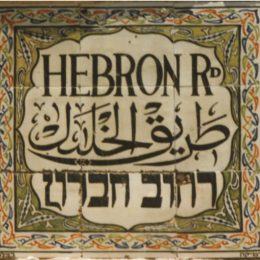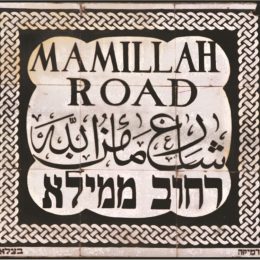Decorative Islamic Influence. The art of glazed ceramic street signs in Jerusalem was initiated in the 1920s by the local British authorities who wanted to enlighten the greyish-brown stone façades of the city streets with a touch of shimmering color. The street signs were designed and produced by both Armenian artists, as well as by the Ceramic Department of the Bezalel School of Art. The frame surrounding the three language inscription is a geometrical interlace, adorned with foliate motifs, inspired by Islamic art. After 1967 modern ceramic street signs were installed in various parts of the city, mainly in historic neighborhoods which were revitalized at the time like the Jewish Quarter in the Old City, Nahalat-Shiv’a, Yemin Moshe and Musrara Neighborhoods. Their design is based on principles of traditional British Mandate Period ceramic street signs.
God is in the Details
